Table of Contents
TogglePart 1: How To Cook Pasta? Best Vegetable Masala pasta Recipe in 2025
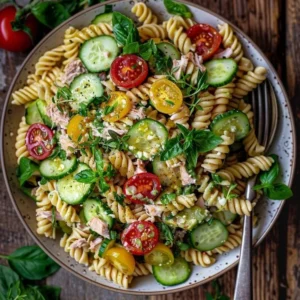
Cooking pasta seems basic, but there are many little tricks that make a difference. I’ll cover from choosing pasta, timing, sauce-pairing, etc.
What you need & choosing the right pasta
-
Type of pasta: Dry pasta (spaghetti, penne, fusilli, shells, etc.) vs fresh pasta (ravioli, fresh egg pastas). Dry pasta needs more boiling time, fresh cooks much faster.
-
Quality: Good pasta holds its shape, doesn’t get mushy. Rough surface (semolina flour) helps sauce cling.
-
Amount: Usually 80-100g dry pasta per person for main dish (this depends on appetite). If mixing into sauce or with large portions, adjust.
Equipment & prep
-
Large pot: Enough water to give pasta room to move. If water is too tight, pasta will stick.
-
Plenty of water: General guideline ~1 liter of water per 100 g pasta (or more).
-
Salt: Salted water seasons the pasta itself.
-
Stirring utensil: Spoon or pasta fork.
-
Colander for draining.
Steps to cook
-
Boil water: Bring large pot of water to a rolling boil.
-
Salt it: Once boiling, add salt. Many recommend enough that water “tastes like sea water”. (But don’t overdo — depends on your preferences / health). Jill Silverman Hough+2Food Network+2
-
Add pasta: Add the dry pasta into the boiling salted water. Stir once or twice right away so it doesn’t stick. Jill Silverman Hough+1
-
Don’t add oil: It’s a common myth that oil prevents sticking — actually it tends to cause sauce not to cling later. Allrecipes+1
-
Stir occasionally: Especially early, to prevent clumps. Jill Silverman Hough+1
-
Time it: Use package instructions as guideline, but begin checking a minute or two before the lower end. For “al dente” (a little bite) texture. Food Network+2Jessica Gavin+2
-
Taste test: You’ll know by chewing. If there’s just a slight resistance, it’s good. Overcooked pasta becomes mushy. Food Network+1
-
Reserve some pasta water: Before draining, scoop out a ladle or cup of the starchy pasta water. It helps later in the sauce if you need to adjust consistency. Food Network+1
-
Drain: Use a colander. Don’t rinse, unless the dish requires cold pasta (like pasta salad). Rinsing washes away starch that helps sauce adhere. Jill Silverman Hough+2Feel Good Foodie+2
-
Combine with sauce: Add pasta to sauce (or sauce to pasta), toss/gently stir. If sauce is too thick or pasta seems dry, add some reserved pasta water to loosen. Finish cooking in sauce for flavor when required. Food Network+1
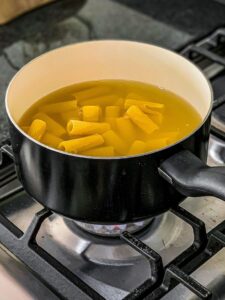
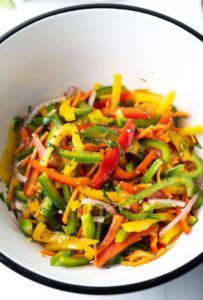
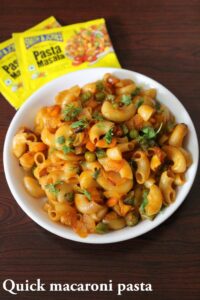

Common mistakes to avoid
-
Using too little water → pasta sticks.
-
Not stirring soon enough.
-
Overcooking → no “bite”.
-
Rinsing (unless making cold dish).
-
Adding oil to boiling water (as mentioned).
-
Letting pasta sit too long after cooking without sauce → it can dry out or clump.
Tips for different kinds of pasta / uses
-
For fresh pasta, cooking time is very short (1-3 minutes). Watch closely. Jessica Gavin
-
For pasta salads, cook to a slightly firmer al dente since it will be cooled. Rinse under cold water to stop cooking and remove some starch (but then add a little oil so pieces don’t stick).
-
For baked pasta (lasagna, baked ziti etc.), slightly undercook (al dente) because it will continue cooking in the oven.
-
Use different shapes depending on sauce: tubes or grooves trap chunkier sauces; thin strands go well with oily or light sauces.
Part 2: Vegetable Masala Recipe (2025 style) + Notes
How To Cook Pasta?
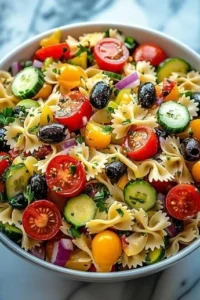
Here’s a modern, flavorful vegetable masala recipe. I’ll include ingredients, step-by-step method, tips, and variations. You can use this as a base and tweak according to taste.
Ingredients (serves ~4-6)
| Component | Example / Quantity |
|---|---|
| Vegetables | 2 medium potatoes (cubed) 1 large carrot (sliced) 1 cup cauliflower florets 1 bell pepper (capsicum), diced ½ cup peas (fresh or frozen) Optional: beans, green beans, any other seasonal veg (broccoli, mushrooms etc.) |
| Onions & aromatics | 1 large onion, finely chopped 4-5 cloves garlic, minced 1-inch piece ginger, minced or grated |
| Tomatoes | 2 large tomatoes, chopped (or 1 can diced tomatoes) 2 tbsp tomato paste / puree |
| Spices / Masala | Turmeric powder (≈ ½ tsp) Coriander powder ≈ 1-2 tsp Cumin powder ≈ 1 tsp Red chili powder (or paprika) depending on heat desired Garam masala ≈ 1 tsp at end Salt to taste |
| Whole spices (optional, for extra aroma) | 1 bay leaf, 1 cinnamon stick (small), 2 cloves, 2 green cardamom pods, cumin seeds (½-1 tsp) |
| Fats | Cooking oil (vegetable, sunflower, or mustard etc.) Optional butter or ghee for richer flavor |
| Liquids | Water or vegetable broth for cooking the vegetables Optional cream / coconut milk for a creamy version |
| Herbs / garnishes | Fresh coriander (cilantro) leaves, chopped Ginger julienne for top (optional) |
Equipment
-
Heavy-bottomed pan or kadai or saucepan with lid
-
Knife & chopping board
-
Stirring spoon (<-wide so veggies stir evenly)
-
Spatula
Step-by-Step Method
How To Cook Pasta?
-
Prep work

-
-
Clean and chop all vegetables to roughly similar size so they cook evenly.
-
Finely chop onion, garlic, ginger.
-
If using whole spices, measure them.
-
-
Sauté whole spices (optional)
-
Heat oil in the pan over medium heat.
-
If using cumin seeds, bay leaf, cinnamon, cloves, cardamom: add them, sauté until they sizzle / become fragrant. This gives a base layer of aroma.
-
-
Onion, garlic, ginger
-
Add chopped onion, sauté until translucent / golden.
-
Add garlic and ginger, cook for a minute or until raw smell goes away.
-
-
Tomato & tomato paste
-
Add chopped tomatoes, cook until they soften.
-
Add tomato paste/puree, stir well, cook until the oil starts separating a bit (i.e. you can see oil edges). This helps deepen flavor.
-
-
Dry spices
-
Add turmeric, chili powder, coriander powder, cumin powder. Mix and cook for a minute so that spices don’t taste raw.
-
-
Add vegetables
-
Add harder vegetables first (potatoes, carrots, cauliflower), mix to coat them in masala.
-
After a few minutes, add softer ones (bell peppers, peas etc.).
-
-
Add liquid & simmer
-
Add enough water or broth to cover vegetables partially.
-
Bring to a boil, then reduce heat, cover, and simmer until vegetables are cooked through but not mushy. Stir occasionally.
-
-
Adjust consistency
-
If too thick, add a little more water. If too thin, cook uncovered for a few minutes to reduce.
-
-
Finish with garam masala & herbs
-
Once vegetables are cooked, sprinkle garam masala.
-
Stir in chopped coriander.
-
If using cream or coconut milk, add near the end, simmer for just a few more minutes.
-
-
Taste & adjust
-
Check for salt, heat (chili), tang (if using tomato paste or tomatoes).
-
If needed, add a little sugar if tomatoes are too acidic.
-
-
Serve
-
Serve hot with rice (plain rice, jeera rice etc.), roti, naan, or even with pasta / bread depending on your mood.
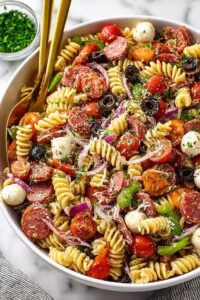
- How To Cook Pasta?
-
Tips & Variations to Elevate
-
Roasting vegetables first: Tossing some veggies (e.g. cauliflower, potatoes) in a bit of oil and roasting (oven or stovetop) gives them a more caramelized flavor before adding to masala.
-
Using a masala paste / blender: Some people blend onions, tomatoes and ginger-garlic into a smooth paste before cooking for a finer texture.
-
Creamy version: Use cashew paste or coconut milk/cream towards end for richness (especially in vegetarian / vegan versions).
-
Tangy kick: Add a squeeze of lemon or a small amount of yogurt or tamarind towards the end.
-
Smoky flavor: For a smoky touch, use smoked paprika or char the tomatoes / onions lightly.
-
Spice levels: Adjust red chili powder, use fresh green chillies if you like more heat.
-
Seasonal vegetables: Use what’s available—beans, peas, mushrooms, broccoli, zucchini etc. But keep cooking times in mind so softer veggies don’t overcook.
Nutritional / modern health touches (2025 relevant)
-
Try to use less saturated fat — use vegetable oil or moderate oil, limit butter/ghee.
-
Use more vegetables to boost fiber.
-
If using cream or coconut milk, maybe choose lighter versions or smaller quantity.
-
Can be made vegan easily (skip dairy) or reduce oil.
Part 3: Combining Pasta + Vegetable Masala
If you want, you can combine the two: make pasta and toss it with the vegetable masala instead of rice or roti. It makes a fusion dish. Ideas:
-
Use penne or fusilli (pastas that hold sauce well).
-
After cooking pasta al dente, drain, reserve some pasta water.
-
Toss pasta in the masala gravy, adding a splash of pasta water if needed to coat well.
-
Garnish with fresh herbs, maybe a little grated cheese (if non-veg/non-vegan) or nutritional yeast.
If you like, I can send you a step-by-step printable recipe card or 10 variations of vegetable masala (like with tofu, with coconut milk, Indo-fusion etc.). Do you want me to prepare that?
Conclusion:
Masala pasta is a perfect fusion of Indian spices and Italian flavors, offering a delicious balance of tangy, spicy, and creamy taste. It is quick to prepare, highly customizable with vegetables or proteins, and loved by people of all ages. Whether served as a snack, main meal, or tiffin option, masala pasta stands out as a comforting and satisfying dish that brings together the best of both cuisines.
Would you like me to make it very short (2–3 lines) for a school project, or a detailed version (a small paragraph) for a food blog?
Health Benefits of Pasta
Pasta is one of the most popular foods around the world, not only because it is tasty and versatile, but also because it offers several health benefits when eaten in moderation as part of a balanced diet.
One of the main benefits of pasta is that it is a good source of complex carbohydrates. These provide a slow and steady release of energy, which helps keep you active and full for longer periods of time. Whole wheat and multigrain pasta are especially beneficial as they are rich in dietary fiber, which supports healthy digestion, controls blood sugar levels, and helps manage weight by promoting satiety.
Pasta is naturally low in fat and sodium, making it a heart-friendly choice when cooked with healthy ingredients. It also contains essential vitamins and minerals such as iron, folate, and B vitamins, which play an important role in maintaining energy levels and overall health.
When combined with vegetables, lean proteins, and healthy fats, pasta can become a balanced and nutritious meal. It can support muscle health, provide antioxidants, and contribute to a healthy lifestyle.
In short, pasta can be both delicious and healthy when prepared with the right ingredients and portion sizes.
Benefits of Masala Pasta for Children
-
Tasty and Attractive: Children often enjoy pasta because of its fun shapes and flavors. Adding Indian masala makes it even more delicious and appealing for kids.
-
Rich in Carbohydrates: Pasta is a good source of complex carbohydrates that provide long-lasting energy, helping children stay active and playful throughout the day.
-
Nutritious with Vegetables: When prepared with vegetables like carrots, peas, capsicum, or corn, masala pasta becomes rich in vitamins, minerals, and fiber, which support healthy growth and digestion.
-
Protein Option: Adding cheese, paneer, or boiled eggs to masala pasta can increase its protein content, which is important for muscle development and overall growth in children.
-
Healthy Alternative to Junk Food: Masala pasta can be a healthier substitute for packaged fast food if made at home with less oil, fresh ingredients, and minimal spices.
-
Boosts Appetite: Its colorful look, mild spices, and yummy taste can encourage fussy eaters to enjoy their meal.
Frequently Asked Pasta Questions
There are some pasta questions we all have! Read below for all the answers.
Does pasta alone have any real nutritional value?
ANSWER:
Pasta is an important part of a healthy diet. It’s an excellent source of complex carbohydrates, the body’s primary fuel for energy, and can even help you feel fuller for longer. Unlike simple sugars that offer a quick, yet fleeting boost of energy, pasta helps sustain energy. In addition to nutrients like iron, folic acid, and B vitamins, pasta also provides a dose of fiber (2.5 grams or more per 2 oz. dry serving).
Does pasta contain GMO wheat?
ANSWER:
GMOs (genetically modified organisms) are the result of the process of genetic modification – the selective or deliberate process of changing an organism’s genes – to improve a trait such as nutritional content that could not otherwise be obtained using conventional plant breeding techniques. Pasta is made from wheat. There is no genetically modified wheat or pasta commercially grown or sold in the U.S or Canada. More information about GMO ingredients in foods can be found at GMO Answers.
